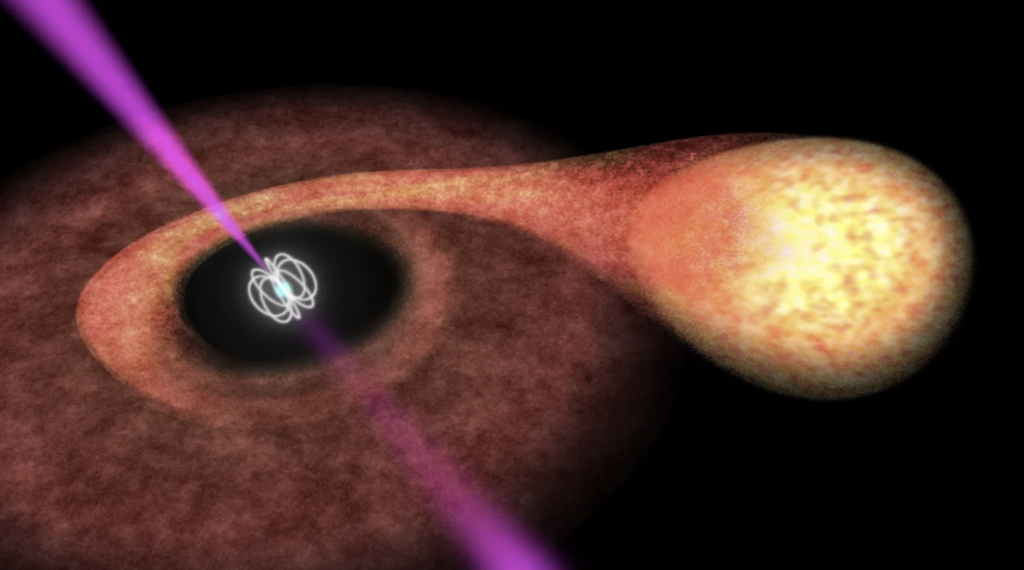The NC Space Grant Consortium awarded our research group a one-year grant to search for new spider binaries. Spider binaries are a class of compact binaries that typically consist of a pulsar (a highly magnetized, rotating neutron star) and a low-mass companion. The intense, high-energy radiation and wind from the neutron star slowly heats up and ablates material from the companion. In time, the orbital period will shorten, and the companion will be consumed. Studies of spider binaries can provide valuable insights into various astrophysical processes, including mass transfer and evolution, the properties and behavior of neutron stars, and high–energy electromagnetic emissions. Such systems are rare, and most have been discovered through X-ray/gamma-ray detections or radio observations of their millisecond pulsars. Due to a series of serendipitous events, our group has discovered one of the closest (and thus brightest) spider binaries currently known using optical photometry instead of radio or high-energy observations. This discovery was made while investigating high signal-to-noise light curves of hot subdwarf binaries — an unrelated type of binary. As the highly irradiated hot spot on the companion rotates in and out of view, the optical flux can vary by up to a factor of ~10 with a light curve shape that mimics those of hot subdwarf reflection effect binaries. Here we propose a series of optical search strategies to uncover and study new spider binaries using data from NASA’s TESS spacecraft, the 4.1-m SOAR telescope, and Skynet.

